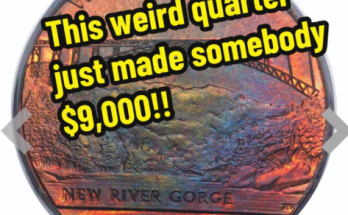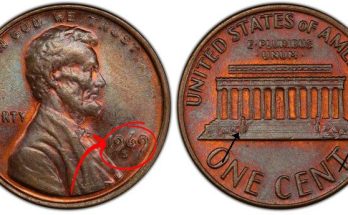A case study undertaken both by myself, Shawn Tew (Michigan), and fellow numismatic researcher Chris Welch (Oregon) has resulted in the conclusion that there were two separate galvanos and that four different master hubs were created for the 1909 transitional year between the end of the Indian Head cent and the beginning of the Lincoln Wheat cent.
Four master hubs were realized while we were comparing reverses of the Wheat cent and the removal of the sculptors’ initials and whether or not there was a known difference between the two. There are, in fact, references showing two different reverses but the second is referred to as the “Reverse of 1910”. We are presenting evidence that this is not the case.
These reverses hereafter will be referred to as RDV-01a, RDV-01b, RDV-02a, and RDV-02b.
In March 1909, The Numismatist announces the coming arrival of sculptor Victor David Brenner’s new Lincoln design. A galvano is created. From there, a master hub makes the master die, which makes a working hub that makes a working die that, ultimately, makes the coin. This hub is used to create the 1909 VDB and 1909-S VDB cents.

For some unknown reason, a second galvano is created. We know this because RDV-02a is created BUT with subtle changes. This master hub is used to continue production of the 1909 VDB but not the 1909-S VDB, as that mintage is ended resulting in 484,000 coins.

These changes are most notable by comparing the N in UNITED and the E in AMERICA (there are many more minor differences but two were selected that are easily distinguishable from one version to the next). RDV-01a shows the N with a shallow cut by the right leg, whereas the N on RDV-02a has a deeper cut. In comparing the E, RDV-01a is level with the feet of the M and the R; whereas on RDV-02a, the E is slightly lower than the feet of the M and the R. We also can determine RDV-01a as the first galvano because all four issues of 1909 present this reverse, whereas only 1909 VDB, 1909, and 1909-S present RDV-02a. This means that a second galvano had to have been created for these changes to appear consistent on RDV-02a.


On August 5, 1909, United States Treasury Secretary Franklin MacVeagh stops the minting process at a mintage of 27,995,000 1909 VDB coins. Due to public outcry, MacVeagh then has Brenner’s initials removed and new master hubs made.
Initials would need to be removed from both galvanos in such a way that no trace would be noticeable–whether that be abrasions, gouges, or over-polishing–and new master hubs made. There have been claims that initials were removed on dies and that ghost initials were left behind – but to this day, no example has been certified by a third-party grading service to substantiate that claim. This theory shows that if a change on the master die, master hub, or working die had been made, then there would be evidence on the coin fields noticeable by graders through the discovery of any abrasions, die gouges, or over-polishing.

Our research also shows that instead of a 1910 reverse used for 1909 production, it was the creation of the second galvano that carried the design to the following years. Somewhere along the making of the master hubs, the first galvano is removed from production and is not used for the remainder of the Lincoln Wheat series.
In all there are a total of seven coins accounted for the 1909 Lincoln Wheat series:

Given that there are two versions of the VDB reverse, this shows that a second galvano was made and later the initials were removed from both. There are no records in either the 1909 or the 1910 Annual Report of the Mint Director showing the cost for the second galvano or why it was produced. Also note, there are no records showing the cost of removing the initials, either. In the 1910 Annual Report, which covers June 30, 1909, through June 30, 1910, we see there were 1,621 dies made for the Philadelphia Mint and 110 for San Francisco for 1 cent minor coinage. Whereas in the following report for 1911 covering June 30, 1910, to June 30, 1911, there are 775 dies made for Philadelphia and 110 for San Francisco for the 1 cent minor coinage. All dies were made at the Philadelphia Mint engraving department. I have been granted access to the National Archives in May to research further.
Our seven reference coins are owned by fellow collector Blaine Neupert and were selected from his lifetime collection. Pictured below is a baseline collection of over 300 original 1909 VDB coins from a 1909 bank bag stored for over 100 years in a safety deposit box at Farmers &Merchants Bank in Chambersurg, Pennsylvania.

* * *
©Shawn Tew and Chris Welch. Both parties retain intellectual and proprietary rights to all material presented.
©Blaine Neupert images contained herein, and owner of coins pictured.
Permission for use is granted for publication and educational purposes only and as long the subject matter is used without removal of any language contained herein.



